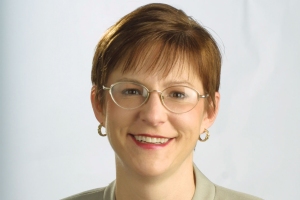Whether CSPs take an active or passive role in the Internet of Things (IoT) they’re going to need to update their support systems, writes Nick Booth
Then it comes to the IoT there is a straight choice for communications service providers (CSPs), says Michelle Nowak, the vice president of product management at CSG International. You can let it run over the top (OTT) of your network, or you can manage it as a service. Given the dumb pipe versus OTT debate, it’s a reasonable assumption that many CSPs will wish to play a very active role in managing machine to machine (M2M) conversations.
Either way, the BSS/OSS systems of the CSP will face a stern examination. If CSPs want to give the basic service, then billing will be straightforward with subscriptions and data charging the main activities, according to Nowak. But in the IoT these activities will be disproportionately high with the added complication of millions of connections billed to a single account.
On the other hand, the CSP that runs the whole system for their client will make much higher margins – presumably because there will be much higher risk – but the value they will provide is the ability to achieve something that few people are able to do.
“The success for any IoT business scenario will involve a network of partners,” says Nowak, “it calls for instant cohesion between wholesale and retail components.”
The CSP supporting the IoT needs billing systems that can rate and charge appropriately for all the parties that need the collected data. That’s a challenge because it involves complex revenue sharing involving multiple entities.
Since retail is a key market for IoT, many clients will be retailers almost equal in size and complexity to the CSP. To support these large enterprises, the CSP’s billing systems must handle large device hierarchies and complex rating algorithms, with millions of devices associated with a single customer. In order to bill for IoT services, the billing platform must support simultaneous B2B and B2C transactions and multiple partner revenue sharing schemes that typify IoT business. As IoT retail billing becomes more varied it’ll include tiered rating plans, pay-as-you-go offers, periodic subscriptions and machine-level lifetime plans. And there’s more to come, says Nowak. “Then the impact on partner settlement complexity will continue to grow,” she says.
Though all these different billing requirements are generally supported today, they’re almost always in disparate systems with no relationships between them. That’s the first major BSS/OSS hurdle that needs to be overcome, according to Nowak.

Another challenge the BBS/OSS vendors and managers must address is IoT traffic will be very different, warns Gavin Hayhurst, Teoco’s product marketing manager. In contrast to the more regular patterns of today’s voice calls, data sessions, messages and updates, IoT traffic will be flooded with constant ‘I am here’ pings from legions of devices or the regular reporting of small amounts of data on a schedule. Though IoT data might not be high – it’ll be 4% of network traffic by 2024 according to figures quoted by Hayhurst – the signalling overhead will be substantial.
The mass playing of the Angry Birds game on mobiles overloaded networks through signaling traffic, not data. Another BSS/OSS crisis stems from localisation as IoT traffic is likely to be focused in specific areas. While connected cars and wearables might be predictable, in agriculture whole herds of IoT-monitored cattle might suddenly appear on a previously deserted cell.
In order to cope with the increase of IoT traffic, operators have a number of options. “Overhauling their BSS/OSS systems is likely to be necessary. As IoT traffic is likely to create more substantial peaks and troughs in specific areas, managing resources at the cell level will become more challenging and much more important,” says Hayhurst. CSPs will need to use a multi-faceted approach to network management to cope with the varying demands of different device types, including dynamic network management and RAN optimisation.
In the next ten years in some cells up to two-thirds of connections might be to IoT devices. CSPs will need planning tools that reflect this new reality and perform advanced forecasting, capacity planning and modelling that take IoT signaling and data traffic into account.
According to Mendix CTO Johan den Haan, BSS/OSS will have to take on a form of artificial intelligence of its own in order to cope. It’s not humanly possible to interpret all of the data being generated by the new sensors and connected devices coming online this year, so machine learning will become commonplace. This will lead to the rise of smart apps that combine contextual awareness of, say, sensors, geofencing, beacons and all the other IoT variables. “The only way to stay competitive will be to develop smart apps that analyse data from connected devices and sensors,” says den Haan.
Johan den Haan: The only way to stay competitive will be to develop smart apps that analyse data from connected devices and sensors
Michelle Nowak: IoT calls for instant cohesion between wholesale and retail components
Comment on this article below or via Twitter: @ VanillaPlusMag OR @jcvplus






